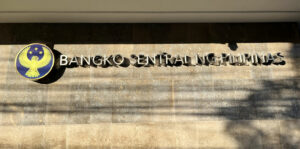YIELDS on the Bangko Sentral ng Pilipinas’ (BSP) term deposits dropped on Wednesday amid strong market demand.
The BSP’s term deposit facility (TDF) attracted bids worth P144.309 billion, above the P100 billion placed on the auction block and P115.005 billion in bids a week ago for a P120-billion offer. This allowed the central bank to make a full award of its TDF offering.
Broken down, tenders for the seven-day debt reached P71.503 billion, higher than the P50 billion auctioned off by the central bank and the P59.433 billion in bids for the P60-billion offer last week.
Banks asked for yields ranging from 5.23% to 5.2675%, narrower than 5.23% to 5.28% a week earlier. This caused the average rate of the one-week deposits to decrease by 0.47 basis point (bp) to 5.2568% from 5.2615%.
Meanwhile, bids for the 14-day term deposits amounted to P72.806 billion, above the P50-billion offer and P55.572 billion in tenders for a P60 billion placed on the auction block a week ago.
Accepted rates ranged from 5.25% to 5.3595%, lower than the 5.265% to 5.425% a week ago. As a result, the average rate for the two-week deposits declined by 0.53 bp to 5.3234% from 5.3287% last week.
Meanwhile, the BSP has not auctioned off 28-day term deposits for nearly five years to give way to its weekly offering of securities with the same tenor.
The central bank uses the term deposits and 28-day bills to mop up excess liquidity in the financial system and to better guide market rates towards its policy rate.
TDF average auction yields were marginally lower following the peso’s rebound against the dollar and the recent decline in global crude oil prices, as these could support the continued easing of inflation that would bolster the case for more policy rate cuts by the BSP, Michael L. Ricafort, chief economist at Rizal Commercial Banking Corp., said in a Viber message.
Uncertainties over the Trump administration’s trade policies could also support further US Federal Reserve rate cuts, he said.
Mr. Ricafort added that strong demand also led to lower term deposit rates.
On Wednesday, the peso returned to the P56 level and closed at a one-week high of P56.881 per dollar.
Meanwhile, oil prices edged up in Asian trade on Wednesday after falling for three consecutive sessions as a US with Japan signaled progress on tariffs, though gains were capped by fading hopes for a breakthrough at a European Union (EU)-China summit, Reuters reported.
Brent crude futures rose 21 cents or 0.31% to $68.80 a barrel by 0351 GMT. US West Texas Intermediate crude futures gained 17 cents or 0.26% at $65.48 per barrel.
Both benchmarks were down about 1% in the previous session after the EU said it was considering countermeasures against US tariffs, as hope faded for a deal ahead of an Aug. 1 deadline.
President Donald J. Trump said on Tuesday that the US and Japan had struck a trade deal that includes a 15% tariff on US imports from Japan. He also said Japan had agreed on $550 billion in investments in the US.
BSP Governor Eli M. Remolona, Jr. has said that they have room for two more rate cuts this year amid moderating inflation.
In June, the central bank delivered a second straight cut, reducing benchmark borrowing costs by 25 bps to bring the key rate to 5.25%. The Monetary Board has now lowered interest rates by a total of 125 bps since it began its easing cycle in August last year.
Meanwhile, the US central bank’s policy-setting Federal Open Market Committee is nearly universally expected to leave the policy rate in its current range of 4.25%-4.5% when it meets next week, as policymakers wait to see how inflation and employment react to tariffs, Reuters reported.
Fed Chair Jerome H. Powell and other Fed officials believe that longer-term inflation expectations remain stable, but they say they are watching nearer-term measures closely, particularly with tariffs likely to increase upward price pressures as companies pass on more of the costs to consumers.
Following last week’s mixed economic signals, traders have all but ruled out a rate cut next week and now see a 56.3% chance of an easing in September, according to the CME FedWatch tool. — Luisa Maria Jacinta C. Jocson with Reuters

